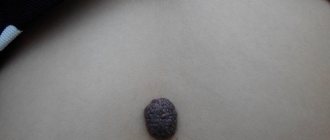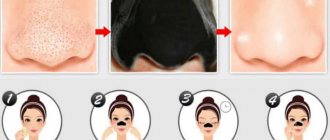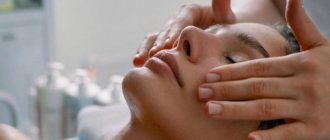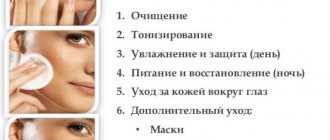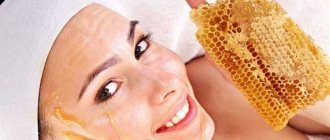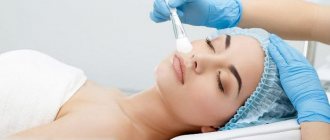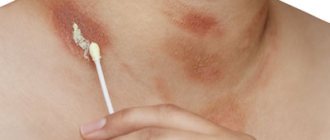- 3324
- 09-10-2020
- Author: Mysekret Team
- 0
Unfortunately, the aging process is irreversible. It cannot be avoided, but it can be stopped or slowed down. Today, cosmetology offers a huge number of different procedures to combat age-related skin changes. One such procedure is an invasive method called biorevitalization.
This method involves injecting hyaluronic acid into the skin. The result of this cosmetic procedure is skin moisturizing, whitening and slowing down aging processes.
It is important to know not only when and under what conditions to carry out such a procedure, but also how to care for your face after biorevitalization so that the effect lasts as long as possible. Also, proper care helps to avoid some unpleasant consequences that may occur after the procedure.
What is biorevitalization?
Biorevitalization is a popular procedure, the essence of which is the introduction of hyaluronic acid directly into the deep layers of the skin. It binds water molecules and allows the correct arrangement of molecular chains consisting of collagen and elastin fibers.
About biorevitalization
Hyaluronic acid is part of epithelial tissue and is involved in the synthesis of collagen and elastin, helping to retain moisture in the layers of the skin. However, with age, less and less hyaluronic acid is produced, and the skin begins to age, dryness appears, and elasticity is lost. Gradually it becomes covered with a network of small wrinkles, which become deeper and deeper over time. The use of biorevitalization is recommended for women after the age of thirty, but for younger girls this procedure will also help maintain the condition of the skin and refresh the complexion.
On a note! For the category of women under thirty years of age, the procedure is preventive in nature, and for those who are older, it is necessary to carry out the procedure for therapeutic purposes.
For biorevitalization, preparations based on hyaluronate are used
Features of hyaluronic acid
Hyaluronic acid is a substance extremely necessary for the human body.
So he produces it himself. But with age, less and less. Since hyalunon is present in all tissues, its deficiency immediately affects the appearance. The skin takes on a grayish tint, becomes covered with wrinkles, joints begin to crack, and visual acuity decreases. Hyaluronic acid obtained in the laboratory can be used as an anti-aging agent due to its properties. Injected under the skin, it:
- deeply moisturizes it;
- activates collagen synthesis;
- restores lost volumes;
- accelerates metabolic processes;
- stimulates tissue regeneration;
- removes acne and traces of them;
- helps get rid of pigmentation;
- smoothes out small wrinkles.
Thus, the procedure improves the condition of the skin not visually, like many others, but really. That’s why cosmetologists and their patients love her so much. But the effectiveness of biorevitalization strongly depends on how correctly the patient behaves before and after it.
Advantages of biorevitalization
The procedure allows you to refresh your face and increase skin elasticity, making it look at least 5 years younger. In addition, the method can eliminate problems such as excessive pigmentation and marks from acne vulgaris. If there are traumatic or postoperative scars in the area where the drug was administered, they may heal much faster.
On a note! The drug can be injected into the area around the eyes, nasolabial folds, and into areas with facial and age wrinkles.
Cosmetic treatment of the entire facial skin is carried out
Like any cosmetic procedure related to surgery, biorevitalization has many advantages and many disadvantages.
Pros.
- Hyaluronate is a completely natural substance that is compatible with human skin, which guarantees the impossibility of rejection and side effects.
- There is no need for preliminary preparation for the procedure, as well as a long recovery period.
- Hyaluronate almost never causes allergies.
- The injections are not particularly painful, almost never require anesthesia and do not take much time.
When the drug is administered, a person does not feel pain, and the injections are done quickly enough
- Skin improvements can be noticed almost immediately, and the effect of the procedure lasts for six months. If you supplement it with preventive measures, it will last for a longer period of time.
- The cost of biorevitalization in comparison with other cosmetic procedures for facial rejuvenation is not high and is quite affordable for many people.
On a note! Biorevitalization is translated from Latin as “return to life.”
Biorevitalization really “brings” skin cells back to life
Cons of the procedure
The result obtained after biorevitalization will please any lady, but, unfortunately, it is accompanied by unpleasant side effects. Bruises and bruises may form at the injection sites, causing pain. The skin of the face may turn red, become covered with a rash, dryness often appears, and swelling is possible.
After some time, most of the unpleasant phenomena will disappear, but some of them will require special attention.
Some side effects do not go away right away
On a note! If the swelling does not subside and the area of the rash continues to increase, this indicates that the drug is causing an allergy. This situation requires medical intervention.
How to prepare for the rejuvenation procedure?
The key to success is the right choice of clinic or salon. Do not believe if they convince you that the procedure can be performed in any conditions. To carry it out, you need sterile conditions, painkillers, and medications for emergency situations.
Choose not only a good salon, but also a doctor. Consider all the information that is available to you - certificates of completion of courses, reviews of previous patients, etc.
If you are conducting a massage course or are going on vacation to the sea, inform the cosmetologist about this. It will distribute the anti-aging treatments so that you can rest easy without worrying about the effects of UV rays. You will have to give up massage for some time, because it cannot be done after injections.
Biorevitalization does not require complex preparation. A few days before the scheduled session, avoid taking antipyretics, painkillers, anti-inflammatory drugs, and do not drink alcohol.
Causes of side effects
Usually all side effects go away within a week. The reason for their appearance may be the following factors:
- individual intolerance;
- incorrect execution of the procedure;
- failure to take precautions after biorevitalization.
Due to some nuances, people have problems after the procedure
On a note! The specialist must tell the patient in detail how to behave after the injections, and also hand over a leaflet outlining all the precautions.
Carrying out biorevitalization does not impose any strict restrictions, but there are still some prohibitions. Prohibited:
- active sports;
- visiting baths, saunas and solariums;
- use of decorative cosmetics;
- drinking alcohol, smoking;
- taking certain medications.
The procedure has contraindications
The cosmetologist should not only advise the patient about the need to observe prohibitions, but also recommend those procedures that can enhance the effect of injections. These include the use of special ointments and creams, a balanced diet, and hygiene procedures.
On a note! After the injection of hyaluronic acid, it is strictly forbidden to touch or massage the face or rub the injection sites, as this can cause infection in the wounds.
Touching your face after biorevitalization is strictly prohibited
More about bans
One of the most important prohibitions is playing sports. The cosmetologist will definitely explain that after the injections, physical activity is strictly prohibited in the first 3-4 days. This rule is due to the fact that playing sports leads to an increase in body temperature, which in itself is undesirable in such situations. When playing sports, active sweating occurs, and the face also sweats. Because of this, the puncture sites may become inflamed, which will increase the healing time. If you lead an active lifestyle and cannot imagine yourself without sports, you need to consult with a specialist about your exercise regimen and the amount of sports activity.
On a note! You should not make such decisions on your own. The doctor will give recommendations taking into account the condition of the skin after the injections and the rate at which the wounds heal.
Sports activities are not advisable at first
You also need to reconsider your diet - you will have to switch to lighter foods with minimal calories. Its digestion will not expend so much strength and energy necessary to restore the skin.
On a note! You need to drink more purified water and consume a minimum amount of salt. It retains water in the body and thereby causes swelling.
You need to temporarily make adjustments to your usual lifestyle
You cannot do beauty injections on menstruation days. These days, sensitivity increases several times, which means that the administration of drugs can cause discomfort, and skin restoration may be delayed.
On a note! Everyone's skin healing ability is different. If your recovery period is prolonged for some reason, this may be a consequence of the individual characteristics of your body. No need to worry, continue with the facial care recommended by your esthetician.
If you do procedures during your menstrual periods, you may experience discomfort.
Visiting the sauna and solarium
Going to places where procedures are performed with sudden temperature changes and high humidity can cause dilation of pores and blood vessels, which will negatively affect the skin of the face.
Visiting a sauna provokes the formation of a rosacea network, redness at the injection sites, and also increases the risk of infection. Do not discount the fact that such procedures also cause sweating, which interferes with wound healing.
On a note! To make them tighten faster, they need to be disinfected rather than heated.
Sauna is the cause of rosacea
If you want to get a tan, keep in mind that darkening your skin means the production of melatonin, which indicates changes in composition at the cellular level. Any changes during the recovery period will be fraught with deterioration of the skin condition.
On a note! If you do not follow medical instructions, the skin will dry out and peel, and the body will spend hyaluronic acid not on a facelift, but on eliminating the consequences of such actions.
Tanning after biorevitalization can lead to flaking and dry skin
Expected effect
After administration of the drug, the epidermis becomes moisturized and elastic, and the complexion becomes fresher and healthier.
Patients also notice that the influence of stress factors decreases - even after lack of sleep, the face looks fresh. The effect becomes noticeable immediately, and over time the effect intensifies. Initially, small wrinkles disappear. After a couple of weeks, deep wrinkles will noticeably smooth out.
When the drug enters the body, it breaks down into tiny particles. They normalize water balance and force the body to produce collagen, which is responsible for youth and fit.
In adulthood, the result will be most noticeable. If you carried out the procedure for prevention without having any visible problems, then the visual effect will not be so noticeable.
Don't have high hopes for one single procedure. To achieve the desired result, you may need a course of 2-5 (the exact number will be determined by a specialist) sessions with a break of 2-4 weeks.
Why is a full course necessary? The drug will not work forever. Gradually, its effect will disappear, the body will again begin to produce less hyaluron and collagen. If you take a course of anti-aging procedures, the skin will receive more moisture and will renew itself at the cellular level longer. As a result, you will notice a more lasting result.
If you follow the recommendations for the number of sessions and care, the effect will last up to six months. In the future, maintenance therapy will be necessary to preserve youth.
What to do with your face after the procedure?
The rehabilitation period after beauty injections will depend on how accurately and regularly you follow all the recommendations. Particular attention should be paid to hygiene procedures. For the first few days, the cosmetologist, as a rule, prohibits washing. The face is cleansed with special lotions or tonics recommended by specialists. In the following days, you must use cool boiled or distilled water to wash your face. You should not wash your face with hot water - this can lead to dysfunction of the sebaceous glands or the formation of subcutaneous balls from the injected drug.
On a note! You can wash your face with neutral foam or gel, but under no circumstances with soap.
Under no circumstances should you use hot water
When using cleansers, make sure that they do not contain abrasive substances that could injure wounds. Also, the product should not contain alcohol or be highly alkaline. All manipulations performed on the face must be performed with extreme caution. Do not touch the skin unnecessarily, or even rub it. You can finish washing by lightly blotting your face with a towel. To wipe the skin, you can use a cotton swab dipped in micellar water. These rules must be followed for at least a week after the procedure.
It is important that the composition of care products does not contain abrasive substances
On the first day after biorevitalization, swelling and redness of the skin can be eliminated by lubricating problem areas with Bepanten or D-Panthenol cream. Troxevasin or a similar remedy can reduce bruises. Ointments should be used up to several times a day. If you feel that your skin is very tight or flaking, try spraying it with thermal water. If you need to walk in the bright sun, you should first apply a high-protection sunscreen to your skin. However, it is better to reduce your time outdoors to a minimum. Any unfavorable weather conditions, for example, frost, heat, wind, have a harmful effect on the skin.
On a note! Despite such restrictions, beauty injections are not seasonal procedures; they can be performed at any time of the year.
Ointments are extremely useful in relieving the condition
Doctors strongly advise against using any oils and hormonal ointments, including those that increase the regenerative properties of the skin. Their dense structure seals pores and puncture holes. When choosing masks, give preference to collagen or alginate ones. They can cool the skin and remove excess moisture. They can be used from the fourth day after the procedure.
Important! Don't forget to ask your doctor in detail about what products you can apply to your skin.
Hormonal ointments should not be used
Injections with botolutoxin (Botox) are allowed. It can be injected both before and after the introduction of hyaluronic acid.
On a note! Botox can enhance the effect of biorevitalization, making the skin even more hydrated and refreshed.
Contour plastic surgery, for example, the injection of fillers, is also not prohibited. Hyaluronic acid saturates the deep layers of the skin with moisture, making it easier for them to tolerate subsequent procedures, and their effect increases. The introduction of hyaluronic acid is perfectly combined with the installation of mesothreads. In this case, biorevitalization is prescribed as a preliminary procedure, and after a few weeks of introducing threads, it is also prescribed as a final procedure.
After biorevitalization, the use of fillers is not prohibited
Among the manipulations that can cause harm after the introduction of hyaluronate, chemical peeling and resurfacing can be noted. They are considered particularly aggressive and can be carried out no earlier than in half a month, or even better – in a month. For the same period, you will have to refrain from massage, which can damage the skin and interfere with regeneration.
On a note! If necessary, facial cleansing is carried out before injections or 7–10 days after it.
You should forget about chemical peeling for a while
You should not carry out plasma lifting at this time. In itself, it is not dangerous for the skin and will not “overload” it, but its effect is the same as that of biorevitalization. If you combine these two procedures, after a few days the shape of your eyes or lips may change slightly.
You can put permanent makeup at the end of the list. You can apply it to the face before introducing hyaluronate. If you do this immediately after, your face may become swollen and swollen.
Permanent makeup is done before the drug is administered
On a note! You should not wash your hair or take a bath for several days after the procedure. You can only take a warm shower. The use of shampoo is also undesirable.
How biorevitalization helps in skin care
Now winter is ending, our skin is tired. What are the main problems with it observed among residents of the metropolis during this period?
Oksana Zakharova , cosmetologist: Indeed, skin care in winter should be especially thorough, because at this time it is exposed to the aggressive effects of climatic factors. Such as: extremely low temperatures and their sudden changes, winds, changes in humidity.
But once upon a time, hundreds of thousands of years ago, humanity already understood this. Winter skin care included protecting and treating unprotected areas of the skin with fat. Thanks to this, our ancestors were probably able to survive in harsh frost conditions. And, probably, they already guessed that the skin is the largest organ that requires increased attention.
When we talk about skin care in winter, from the point of view of aesthetic medicine, we focus more on the skin of the face and hands. The most “naked”, and therefore the most vulnerable parts of the body. Protection and restoration of skin during the cold season are especially important for residents of Russia.
To understand how to provide skin care in winter, we will try to delve a little into the essence of the processes occurring in the skin under the influence of unfavorable temperature factors at a level completely invisible to the eye. Under the influence of low temperatures, the first thing that occurs is a narrowing of the superficial blood vessels of the skin, as the body tries to reduce heat loss and, as a result, increase the flow of warm blood to the internal organs. However, there is also a downside to the process - when the lumen of the vessels narrows, the blood flow directly to the skin decreases, since the most superficial layer of the skin, the epidermis, does not have its own vascular system and is supplied with blood only through the vessels of the dermis - the deeper layers. It's not hard to guess what happens next. When the air temperature decreases, the blood vessels of the skin either begin to narrow to reduce heat loss from the surface of the skin, or expand again to prevent cooling of the epidermis.
When exposed to cold temperatures, water in the skin turns into ice crystals, which can also damage skin cells. However, good winter skin care helps prevent this.
Under the influence of wind, when the skin is exposed to dry frosty air, heating systems in houses, the evaporation of water from the surface of the skin increases, and the connection between the cells of the stratum corneum of the epidermis is disrupted. The skin becomes dry, more sensitive and vulnerable, peels in places, and is also deprived of its natural moisture.
But everything is not so scary; fortunately, the skin has very good adaptability to any influences, thanks to the presence of regulatory proteins in it - cytokines, capable of coordinating the activity of cells.
What happens to dry, oily, sensitive skin?
In the outermost stratum corneum there is a so-called barrier - a water-lipid mantle, which, under normal conditions, helps cells of any skin type to prevent water loss, thereby protecting against dehydration. But when the skin becomes dry, lipids, that is, the fats of the outer layer, often fail to cope. Cells begin to slough off and flaking may occur. And even those whose skin is not usually dry often have problems of this nature during the winter months. The skin barrier is no longer as effective in extreme weather conditions because it loses most of its natural moisturizing factors.
It is under the influence of the processes described above that the skin absorbs nutrients worse and is poorly moisturized. The complexion becomes dull and its surface is uneven. Taking care of your skin in winter helps you avoid this.
Sensitive, thin skin, with multiple telangiectasias, is least resistant to winter temperatures. People with this skin type often complain of flaking, tightness, itching, and redness of the skin, especially acute in winter.
Dry skin is also hypersensitive to wind, moisture, cold and other adverse influences. And with age, the skin becomes even drier and therefore even more in need of regular cosmetic protection.
Oily facial skin is characterized by active activity of the sebaceous glands. On the one hand, sebum secreted in excess causes a lot of trouble, on the other hand it perfectly protects against the negative effects of the environment.
Normal skin type is extremely rare. However, owners of this type of skin should also remember that over the course of a lifetime, the skin of the same person, under the prolonged influence of unfavorable factors, can change from one type to another, and therefore it can easily become dry or sensitive.
What winter skin care do age groups require: 20+, 30+ and 40+ years?
First, I would like to talk about the “gold standards” of skin care in winter, regardless of skin type and age.
So, try to use mild products for cleansing that do not damage the skin’s protective barrier with pH = 5.5-7.0. Do not use alkaline soap, alcohol solutions, products containing acetones, strong surfactants (sodium lauryl sulfate and ammonium lauryl sulfate). Wash your face with warm water, if possible, do not use scrubs, do not rub your face with a towel.
You should not apply cosmetics immediately before going outside, but it is better to do it 30-60 minutes before leaving the house.
Moisturizers should be used in the evening (especially after a shower directly on damp skin), and protective and softening creams - in the morning.
In order to care for your skin in winter, it is important to avoid aggressive, drying procedures during extremely low temperatures. This is especially important for those with dry or sensitive skin. Otherwise, strictly follow the recommendations of your cosmetologist for skin care in winter while undergoing chemical peels, for example, microcrystalline resurfacing and other similar procedures.
You can soothe and soften the skin yourself, using masks based on cream, honey, sour cream, which will help restore the protective layer and nourish the skin with microelements. If you have difficulty preparing masks at home, talk to your cosmetologist about your home winter skin care arsenal (for example, creams containing hyaluronic acid, silicones, natural oils: avocado, jojoba, shea (karite)).
Pay special attention to the arms and neck, as these areas contain fewer sebaceous glands and less pronounced subcutaneous fat.
For skin care in winter, choose cosmetics in which the solvent is glycols (propylene glycol, for example), with a lower freezing point than water (remember about ice crystals that damage the skin?)
At the age of 25+, the skin, as a rule, is most resistant to adverse environmental influences and is able to respond gratefully to the local effects of creams and masks, and therefore very often cosmetologists limit their prescriptions to the selection of cosmetic care appropriate to the skin type and climatic conditions.
Well, what to do if home remedies are no longer enough to care for your skin in winter? If you have very dry or sensitive skin?
In this case, you can turn to modern methods of aesthetic medicine for help. And her arsenal is very large, believe me! And is able to replenish any moisture lost.
Starting at the age of 30, and sometimes a little earlier, we notice that the skin becomes different: drier, small wrinkles appear around the eyes and on the forehead, color deteriorates, and skin tone decreases. And, if you feel that you cannot get by with ordinary home cosmetics, you can resort to a fairly effective and practically safe procedure - biorevitalization.
What is biorevitalization? What problems does it solve?
Bio - revitalization! This is a modern injection procedure to eliminate the consequences of skin damage from adverse influences, which can restore the smoothness of the skin texture, give the skin a natural and fresh look, and can effectively combat even small wrinkles.
The biorevitalization procedure is based on the introduction of hyaluronic acid of non-animal origin to correct the shape of the face and wrinkles, creating a hydro reserve in the skin. This type of acid plays an important role in the structure of our skin - it stimulates the body's production of collagen, nourishes the skin and protects it from the effects of oxidizing substances.
Hyaluronic acid is able to retain moisture in the skin. One molecule can attract up to 500 molecules of water in order to maintain moisture balance in tissues. It is this obvious moisturizing role of hyaluronic acid that ensures youthful skin. It is known that the first signs of aging are associated with a reduction in the amount of own hyaluronic acid, which is “responsible” for hydration, reproductive abilities of fibroblasts and collagen synthesis, as well as for the production of vitamins, amino acids, minerals, nucleic acids, coenzymes and antioxidants, the task of which is to stimulate, nourish and restore the skin.
Are there any differences in drugs depending on the brand, density and other indicators?
Yes, today we have a fairly wide selection of companies offering us drugs, so to speak, “for every taste and budget.” And it is sometimes very difficult for our patients to stop taking any drug, much less do it consciously. Therefore, it is important to listen to the advice of a cosmetologist who will tell you what a course of biorevitalization will look like in relation to your skin type and your age, what density and in what quantity. And you can be fully satisfied with the results of the procedures by trusting the qualifications of a cosmetologist and using only a certified product.
In which zones is it carried out and what density is needed?
Biorevitalization can be performed in any area of the body. As a rule, procedures are most often performed in the area of the face, neck, décolleté, hands and forearms.
The choice of drug density depends on many factors, such as age, skin type, and what effect we would prefer to obtain.
What is the price range?
It is difficult to talk about price, since biorevitalization preparations have different densities and, therefore, different purposes, and the manufacturing companies also differ. And this is not even what plays a decisive role in determining the price of the procedure. We are all very different, we have different sizes and different degrees of dehydration, different biological ages. Therefore, the average price range can vary from 6 to 15 thousand per procedure.
How often can it be repeated? What does the course look like? How many treatments are needed?
The number and frequency of biorevitalization procedures depends on the density of hyaluronic acid (biorevitalizant), the severity of the problem and the age of the patient. On average, 2-4 procedures with an interval of 14-28 days. The course is usually carried out once every 6-12 months.
When performing biorevitalization, as a rule, an instant effect is visible immediately after the first procedure, however, it is still recommended to carry out a course of procedures to achieve a lasting, pronounced effect.
The duration of the session is 30 - 60 minutes, depending on the area in which the procedure will be performed and whether local anesthesia will be used.
There is an opinion that it cannot be done more than once a year. What can you say about this?
In my practice, there have been cases of patients who had a history of undergoing biorevitalization procedures in the amount of 10-12 per course, with an interval of 14 days. At the same time, the effect was visible and increased up to the 6th procedure. Then the patients did not see any changes, the effect stabilized and there was no need for additional 4-6 procedures. The skin “takes its toll” in 4, maximum 6 procedures. I do not think it is justified to conduct such long courses. It is more justified, in my opinion, after completing the course of procedures to perform 1-2 additional procedures once every 1-3 months to maintain the effect.
What complications can there be? Contraindications?
It is recommended to avoid aspirin and other non-steroidal anti-inflammatory drugs for a week before the procedure. After the procedure, it is recommended to avoid visiting the sauna, bathhouse, swimming pool, and being exposed to UV rays for up to 7 days.
Contraindications are standard for most cosmetic procedures:
- Pregnancy and lactation
- Autoimmune diseases
- Local skin infections
- Acute infectious diseases
- Herpetic infection
- Oncological diseases
- Individual intolerance to hyaluronic acid.
At what age should I start? Who just needs it?
The goal of the biorevitalization program is to delay the aging process through active hydration - moisturizing - for as long as possible. Fight the already beginning signs of aging. Therefore, hyaluronic acid as part of a mesotherapy cocktail can give excellent results if we have young skin 23-28 years old and such patients, as a rule, need biorevitalization with pure hyaluronic acid, and especially with high density, in very rare cases.
The bioactivation program is needed for patients with dry and dehydrated skin; I would even say it is vital. And also for patients whose skin has reduced turgor, associated with a genetically reduced amount of collagen, prone to the formation of wrinkles.
The procedure can be recommended to young people even as a single procedure or at the end of care procedures or mesotherapy. For women of any age as monotherapy or in combination with other aesthetic procedures to improve results. The same goes for men with signs of photoaging or dehydrated skin. Particularly useful and effective for restoring dull, tired, “stressed” skin and “smoker’s skin”.
For women in the postpartum period, with deterioration of the skin texture - post-acne, scars, stretch marks - and their prevention. It is also recommended as anti-shock therapy after aggressive cosmetic procedures such as fractional thermolysis, radio wave lifting, peelings.
And yet, I repeat, the individual scheme of procedures is determined by the doctor and the choice depends on age, the current condition of the skin, this becomes clear after analyzing your skin during the initial consultation.
Please tell us about vector lifting? This is also biorevitalization, right? What is the essence of the method? Who needs it? Can it be done at a young age? What problems can it solve? Can it help improve facial contour?
Despite the fact that it would seem that the word “vector” is more familiar to people of non-medical professions, nevertheless, it has taken root very well in the vocabulary of plastic surgeons and cosmetologists. And all because it very accurately matches the description of the technique of performing the vector lifting procedure. The tandem of the words “vector and hyaluronic acid” gives our imagination the opportunity to imagine the effects that we can get by using hyaluronic acid in this way.
When carrying out the vector lifting procedure, a stabilized hyaluronic acid preparation is introduced in the form of diamonds, a mesh, or strands running from the periphery to the center, creating a mechanical dense frame. This filler injection technique is aimed at correcting facial contours and smoothing out wrinkles. The formed zones of tension and compression of the skin in the direction we set lead to thickening of the skin. And when hyaluronic acid begins to gradually be destroyed by the body’s own enzymes, the process of skin regeneration begins, the synthesis of new collagen and elastin fibers is achieved, and a pronounced effect of hydration, that is, moisturizing, is achieved. And we can safely call this effect biorevitalization.
Unlike vector lifting, the biorevitalization procedure uses unstabilized hyaluronic acid, which dissolves quickly enough to allow the skin to use its own reserve forces for rejuvenation. Therefore, this procedure is most popular among young and middle-aged people.
Unfortunately, with age, the amount of your own synthesized collagen and hyaluronic acid decreases and it becomes difficult to restore the deficiency using your own reserves, and the effect of biorevitalization with unstabilized hyaluronic acid does not provide the desired prolonged effect. Moreover, under the influence of gravity, we begin to notice the sagging of the oval of the face. And at this moment (as a rule, this is the age of 35-55 years) we resort to the vector lifting technique in order to preserve youth for as long as possible and, perhaps, with the correct timely implementation and combination of biorevitalization and vector lifting procedures, postpone the timing of plastic surgery, and in some cases, even avoid surgery.
Bad habits
You should give up drinking alcohol and smoking.
| Bad habit | Description |
| Smoking | Nicotine dries the skin, and this leads to a displacement of the introduced hyaluronic acid. It is not recommended to smoke 12 hours before the procedure until 48 hours after. |
| Drinking alcohol | Alcohol can also cause more serious consequences. It causes vasodilation, and the resulting increased blood flow “moves” the drug. It turns out that hyaluronate is removed from the cells without having any effect. Alcoholic cocktails are considered especially dangerous in this regard. They can cause swelling of the skin. Alcohol should be avoided for 4 or 5 days after injections. The best option would be not to drink alcoholic beverages for 2 or 3 weeks until the maximum effect is achieved. |
You should not drink alcohol for 2-3 weeks after biorevitalization
Remember that you need to be vigilant. If any side effects are in no hurry to disappear or, on the contrary, begin to intensify, you should definitely visit a cosmetologist and describe your problem to him. It is possible that this is an allergic reaction.
If you have problems, you should go to the doctor
Possible complications
If the consequences of biorevitalization do not cause concern, then complications are serious problems that can greatly affect the health or aesthetic effect of the procedure even after several years.
There may be:
- keloid scars;
- loss of skin sensitivity
- embolism of the vessel, and as a result - necrosis;
- fibrosis;
- white spots on the surface of the skin;
- pink and blue stripes that show through under the skin and are called the Tyndall effect;
- granulomas .
The most serious complication is embolism. During an embolism, hyaluronic acid goes directly into the blood vessel, clogging it. If the cosmetologist does not remove the blockage in time, tissue necrosis may develop.
Is it worth doing makeup?
After hyaluronate injections, the use of cosmetics is strictly prohibited. During the first few days, any decorative products, especially powder and foundation, “seal” the wounds and provoke inflammation. After a few more days, you can tint your eyes and lips, but it is better not to touch the rest of the face. When half a month has passed, you can use cosmetics as usual.
On a note! It is advisable to use aloe vera gel as a base product.
It is better not to use any cosmetics for the first days after the procedure.
Specialists are often asked whether it is worth doing a massage after an injection. Many believe that this way the gel can be distributed, and the skin will recover faster. But this is not so: such events are more likely to displace the gel.
On a note! Before carrying out any actions concerning facial skin, you must obtain the approval of a cosmetologist.
Makeup can be done only after receiving permission from a cosmetologist
Two or three weeks after biorevitalization, you need to carry out superficial and medium peeling. It must be carried out in the office of a cosmetologist. After this, the skin will look younger and rested.
How is the rejuvenation procedure performed?
During the consultation, the cosmetologist should find out your wishes and make sure there are no contraindications. Tell us what result you expect.
Injection biorevitalization
First, remove makeup. Patients who are afraid of pain are given anesthesia. The doctor must open the package in the presence of the patient. Inside is a disposable syringe with a very thin needle. It is not recommended to administer a product that has recently been taken out of the refrigerator. It should warm up to room temperature - this will make the injections less painful.
The treatment area is wiped with an antiseptic, then the drug is injected. When administering IAL System ACP or Restylane Vital, a brief kneading massage is necessary to improve the distribution of the gel. Then gauze pads are applied to relieve swelling. The final stage of the procedure is treatment with an antiseptic and application of anti-inflammatory creams. The entire session will take you about 30-50 minutes, returning several years of lost youth.
To shorten the rehabilitation period, speed up wound healing and subsidence of swelling, a special mask is used that reduces swelling and the number of bruises.
After injections, patients should pay attention to the rate of resorption of papules. Normally, the process should not take more than three days. If the papules have not disappeared after 72 hours, you should consult a specialist for advice.
Non-injection biorevitalization
Rejuvenation without a syringe is almost painless and resembles a standard salon skin care procedure. Initially, the specialist cleanses the skin using a special composition. Then an active gel of small molecular structure is applied. Under the influence of external stimuli (laser radiation, microcurrent or oxygen under pressure), hyaluronate penetrates into the deep layers of the dermis. After this, the cosmetologist applies a special finishing mask.
Additional recommendations
Before administering hyaluronic acid injections, it is advisable to carry out a series of peels. This will help the drug to be absorbed faster and increase the effectiveness of the procedure. The time interval between the last peeling and the introduction of hyaluronate should be at least a week.
Biorevitalization is carried out to moisturize the deep layers of the skin. It is necessary to ensure that the body does not experience even the slightest deficiency of water, which means you need to consume as much of it as possible. But you need to drink purified water, you can also drink mineral water, but still. This way you will moisturize your skin using the body's internal reserves.
It is important to drink plenty of clean water
On a note! For swelling, it is recommended to wipe your face with pieces of ice. But these actions can be carried out only on the third day after administration of the drug.
If, after biorevitalization, unevenness appears on the skin, do not even try to smooth it out. You may harm your skin. With proper care, everything will resolve on its own.
Skin irregularities go away on their own - you just need to wait
After the procedure, you should be given a reminder on how to provide facial care after biorevitalization. The responsible specialist will give you his contact number so that you can contact him if necessary.
If you want to achieve a lasting effect using biorevitalization, you must follow a cyclical procedure. The thing is that cells are renewed from time to time, and as a result of metabolic processes, hyaluronate is broken down and removed out. For prevention, three or four procedures will be enough. Subsequent repetition is necessary at least once every six months.
On a note! In cases where it is necessary to eliminate an already existing problem, only a specialist will be able to determine the number of procedures and their regularity.
Three to four procedures are sufficient to prevent wrinkles.
If a cosmetologist prescribes any special products, they must be purchased and used for their intended purpose. They have antiseptic and antibacterial properties and can prevent infection. It is unlikely that you will have to use them for longer than 3-4 days, because this time is enough for wounds to heal.
It usually takes half a week for wounds to heal.
If you are taking medications, consult your doctor; they can probably be replaced with safer alternatives. It is best, of course, to wait until the treatment is completed and only then carry out biorevitalization.
On a note! In a situation where a medication is prescribed to treat a serious illness, you should never stop taking it without permission.
You need to ask your doctor if the medications the patient is taking need to be replaced with analogues.
In pursuit of beauty and youth, try not to make mistakes that could negatively affect your appearance or health. Remember that the effect of cosmetic procedures depends largely on how you provide care after them.
Tips from cosmetologists
In order for biorevitalization to be successful, you should take the advice of cosmetologists:
- if you are planning a trip to countries with a hot climate or a seaside holiday, it is better to carry out two biorevitalization procedures before the trip, and two after. In this case, the skin will prepare for the negative effects of ultraviolet radiation, while avoiding photoaging;
- Always and everywhere you need to check what kind of drug is being used for injection. This is necessary in order to be sure that a high-quality certified product is used. Even if the swelling does not disappear within a day, the psychological factor plays a role and it is not so painful;
- in some clinics, it is mandatory to examine the packaging and give the patient a sticker with the number and series of the drug administered, so that he is sure that the product is original and has the opportunity to see the quality certificate for this particular medicine. It’s worth asking your doctor if they have such a rule;
- a thorough medical history collection by the doctor allows you to avoid many negative consequences;
- if papules and swelling in the face area persist for more than two days, and in the décolleté and neck area for more than three days, you should seek advice from the doctor who performed the biorevitalization.
- When combining biorevitalization with Botox injections, it must be done first so as not to reduce the effect of botulinum toxin injection.
Before going to the clinic for biorevitalization, you should definitely read the list of contraindications for the use of hyaluronic acid.
